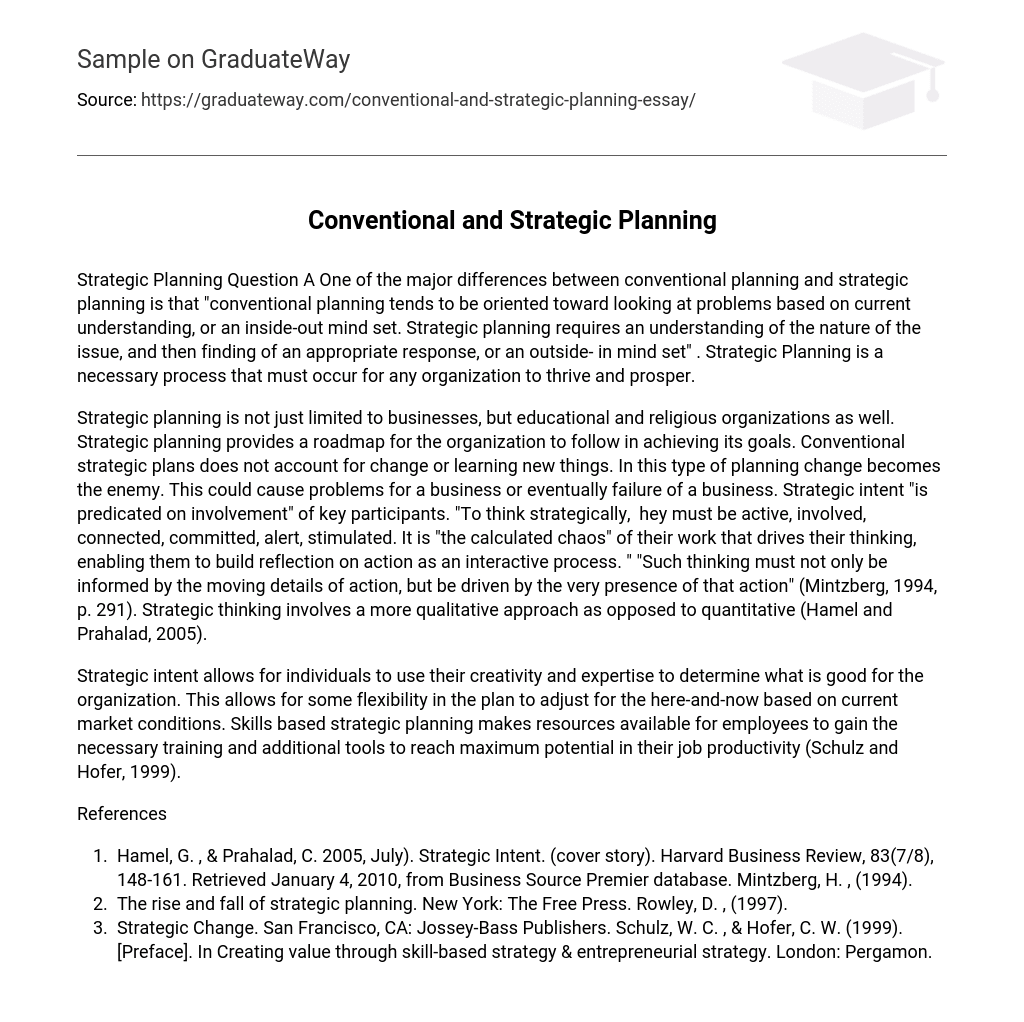Strategic Planning Question A One of the major differences between conventional planning and strategic planning is that “conventional planning tends to be oriented toward looking at problems based on current understanding, or an inside-out mind set. Strategic planning requires an understanding of the nature of the issue, and then finding of an appropriate response, or an outside- in mind set” . Strategic Planning is a necessary process that must occur for any organization to thrive and prosper.
Strategic planning is not just limited to businesses, but educational and religious organizations as well. Strategic planning provides a roadmap for the organization to follow in achieving its goals. Conventional strategic plans does not account for change or learning new things. In this type of planning change becomes the enemy. This could cause problems for a business or eventually failure of a business. Strategic intent “is predicated on involvement” of key participants. “To think strategically, hey must be active, involved, connected, committed, alert, stimulated. It is “the calculated chaos” of their work that drives their thinking, enabling them to build reflection on action as an interactive process. ” “Such thinking must not only be informed by the moving details of action, but be driven by the very presence of that action” (Mintzberg, 1994, p. 291). Strategic thinking involves a more qualitative approach as opposed to quantitative (Hamel and Prahalad, 2005).
Strategic intent allows for individuals to use their creativity and expertise to determine what is good for the organization. This allows for some flexibility in the plan to adjust for the here-and-now based on current market conditions. Skills based strategic planning makes resources available for employees to gain the necessary training and additional tools to reach maximum potential in their job productivity (Schulz and Hofer, 1999).
References
- Hamel, G. , & Prahalad, C. 2005, July). Strategic Intent. (cover story). Harvard Business Review, 83(7/8), 148-161. Retrieved January 4, 2010, from Business Source Premier database. Mintzberg, H. , (1994).
- The rise and fall of strategic planning. New York: The Free Press. Rowley, D. , (1997).
- Strategic Change. San Francisco, CA: Jossey-Bass Publishers. Schulz, W. C. , & Hofer, C. W. (1999). [Preface]. In Creating value through skill-based strategy & entrepreneurial strategy. London: Pergamon.





